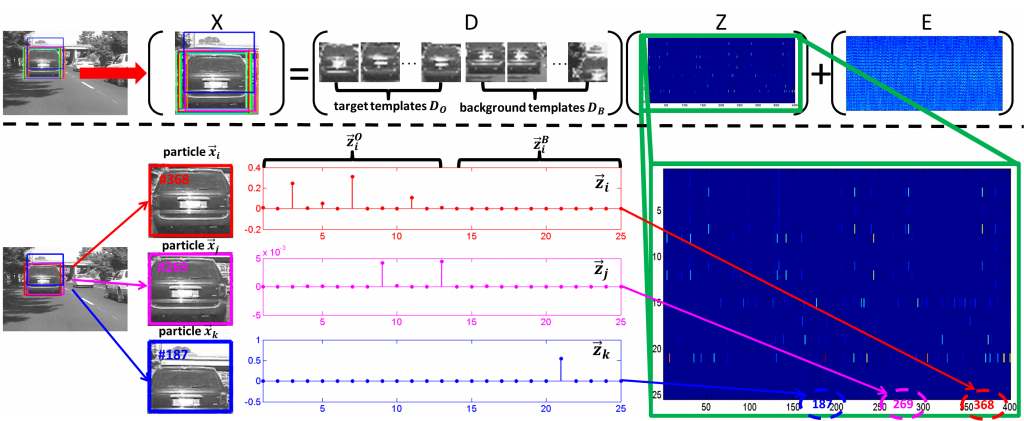Low Rank Sparse Learning for Robust Visual Tracking
- Posted on May 10, 2013 at 3:09 pm by kcarr1@illinois.edu.
- Categorized Uncategorized.
Published in ECCV 2012.
In this paper, we propose a new particle-filter based tracking algorithm that exploits the relationship between particles (candidate targets). By representing particles as sparse linear combinations of dictionary templates, this algorithm capitalizes on the inherent low-rank structure of particle representations that are learned jointly. As such, it casts the tracking problem as a low-rank matrix learning problem. This low-rank sparse tracker (LRST) has a number of attractive properties. (1) Since LRST adaptively updates dictionary templates, it can handle significant changes in appearance due to variations in illumination, pose, scale, etc. (2) The linear representation in LRST explicitly incorporates background templates in the dictionary and a sparse error term, which enables LRST to address the tracking drift problem and to be robust against occlusion espectively. (3) LRST is computationally attractive, since the low-rank learning problem can be efficiently solved as a sequence of closed form update operations, which yield a time complexity that is linear in the number of particles and the template size. We evaluate the performance of LRST by applying it to a set of challenging video sequences and comparing it to 6 popular tracking methods. Our experiments show that by representing particles jointly, LRST not only outperforms the state-of-the-art in tracking accuracy but also significantly improves the time complexity of methods that use a similar sparse linear representation model for particles [1].
People:
Tianzhu Zhang
Bernard Ghanem
Narendra Ahuja
Documents:
Acknowledgement:
This study is supported by the research grant for the Human Sixth Sense Programme at the Advanced Digital Sciences Center from Singapore’s Agency for Science, Technology and Research (A*STAR).
This study is supported by the research grant for the Human Sixth Sense Programme at the Advanced Digital Sciences Center from Singapore’s Agency for Science, Technology and Research (A*STAR).
